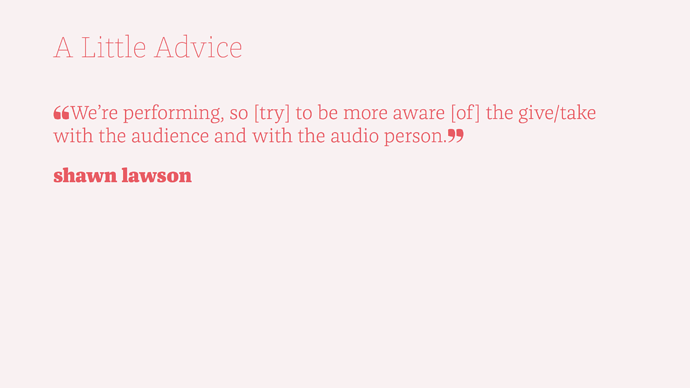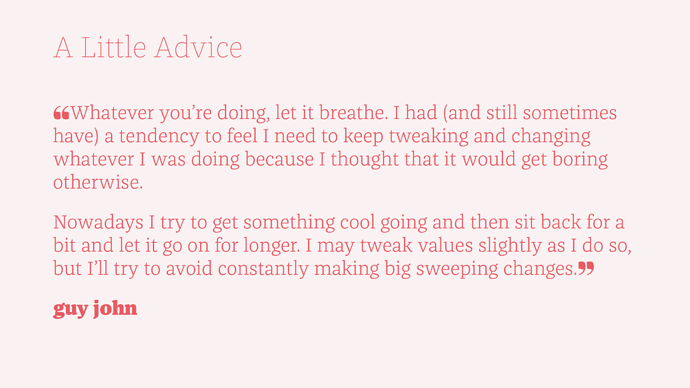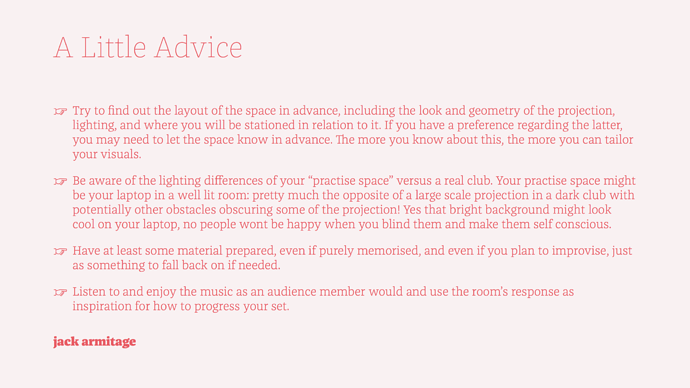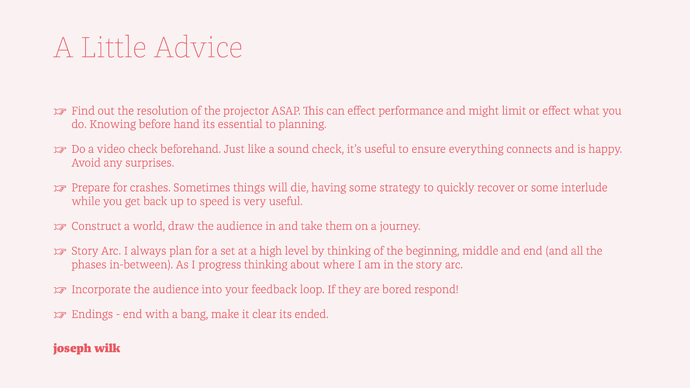I will be running a workshop on livecoding visuals soon and I am trying to be sure I include not just pragmatic info about the tool we’ll be using (Hydra), but also about about performing itself. While I have some ideas, I am curious about what you wish you’d know or would be sure to tell folks.
Thanks so much!
Whatever you’re doing, let it breathe. I had (and still sometimes have) a tendancy to feel I need to keep tweaking and changing whatever I was doing because I thought that it would get boring otherwise.
Nowadays I try to get something cool going and then sit back for a bit and let it go on for longer. I may tweak values slightly as I do so, but I’ll try to avoid constantly making big sweeping changes.
I think rumblesan has a good point. Often I get pulled into the code so much, that I forget to look up and see how engaged the audience is. We’re performing, so trying to be more aware and the give/take with the audience and with the audio person.
1 Like
Some things that come to mind, although I’ve only done a handful of visual sets over the years:
- Try to find out the layout of the space in advance, including the look and geometry of the projection, lighting, and where you will be stationed in relation to it. If you have a preference regarding the latter, you may need to let the space know in advance. The more you know about this, the more you can tailor your visuals.
- Be aware of the lighting differences of your “practise space” versus a real club. Your practise space might be your laptop in a well lit room: pretty much the opposite of a large scale projection in a dark club with potentially other obstacles obscuring some of the projection! Yes that bright background might look cool on your laptop, no people wont be happy when you blind them and make them self conscious.
- Have at least some material prepared, even if purely memorised, and even if you plan to improvise, just as something to fall back on if needed.
- Listen to and enjoy the music as an audience member would and use the room’s response as inspiration for how to progress your set.
Thank you all for your input. I ended up putting together advice slides in my deck for attendees with your words.
2 Likes



